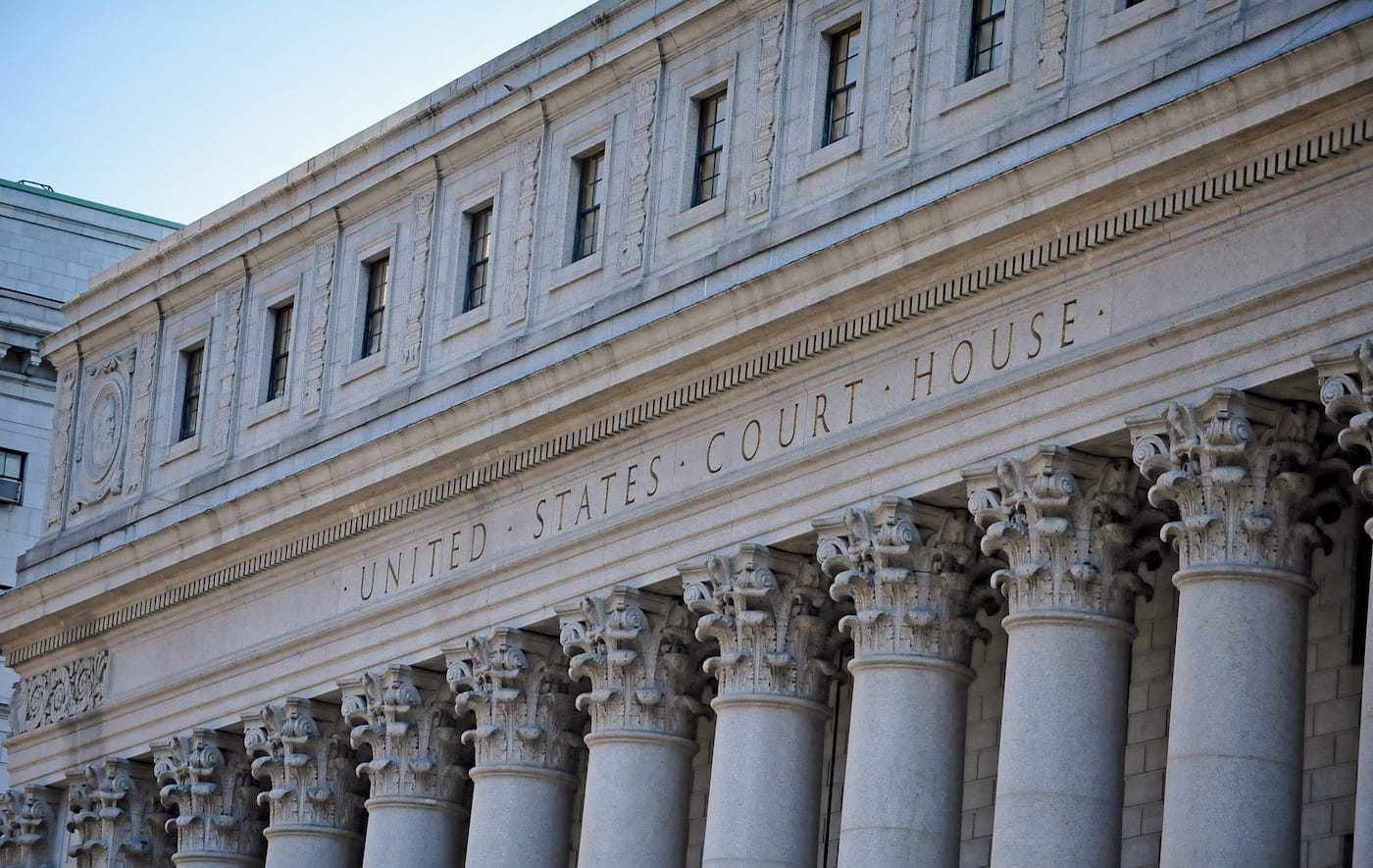Can an Outsider Artist Win His $100 Million Lawsuit Against NYC's Five Major Museums? [UPDATED]
On Monday, artist Robert Cenedella's lawyers appeared before a Manhattan judge to argue that a conspiracy exists between New York's top museums and galleries to celebrate the Warhols of the world at the expense of the "Anti-Warhols." [UPDATE: Cenedella's case has been dismissed by a judge for insuff

After almost a half-century of fighting the art establishment for recognition, Robert Cenedella finally had his day in court on Monday, December 17. Appearing before Judge John G. Koeltl of New York’s Southern District, the outsider artist’s lawyers argued that his $100 million lawsuit against New York’s top museums should continue to trial so that litigators might uncover a potential conspiracy linking those cultural institutions to the art market’s top five galleries in a pay-to-play scheme.
Cenedella, who was the subject of the 2016 documentary Art Bastard, alleges that the Metropolitan Museum of Art, the Whitney Museum of American Art, the Guggenheim Museum, the New Museum, and the Museum of Modern Art ignore artists, including himself, who are not represented by a select group of commercial galleries.
His lawsuit claims that those museums violate anti-trust laws by conspiring with galleries including Gagosian, Pace, David Zwirner, Marian Goodman, and Hauser & Wirth to inflate the prices of certain artists.
Previous reports have indeed found a link between prestigious gallery representation and museum acquisitions as metrics of an artist’s career success. A 2015 study by The Art Newspaper found that, over a seven-year period, artists represented by five of the world’s biggest galleries accounted for about a third of solo museum shows in the United States. Analyzing the careers of a half-million artists between 1980 and 2016, a more recent study released in November 2018 found that success as a professional artist relied on a similarly smell network of museums and galleries that included all 10 of the alleged co-conspirators in Cenedella’s complaint. “If one of your first five shows as an artist is held at a gallery in the heart of this network, the chances of your ending your career on the fringes is 0.2 percent,” the study’s author told the Wall Street Journal. “The network itself will protect you because people talk to each other and trade each other’s shows.”
When the lawsuit first appeared earlier this year, lawyers defending the museums described the allegations as “completely baseless,” telling the judge that “there are not enough facts” in the complaint to support such a sweeping claim.
“Our client is looking to make it an even playing field for all artists,” Cenedella’s lawyer Robert Hantman told Hyperallergic back in February, “I wouldn’t say it’s a performance.”
At court yesterday, the museums’ lawyers stayed on message. William Cavanaugh of the firm Patterson Belknap portrayed Cenedella’s lawsuit as an effort by a failed artist to exact revenge on the institutions that never wanted his work. “Few of us try to transform disappointment into conspiracy,” he told the judge, with a “facially implausible anti-trust claim.”
Cavanaugh continued his oral argument by taking each of the plaintiff’s claims to a logical dead end. The defense emphasized that there was no factual basis to Cenedella’s allegations, especially because most curators operate on their subjective tastes. “There’s no arguing with taste,” he added.
More specifically, the defense cited as precedent the 2007 Supreme Court case Bell Atlantic Corp. v. Twombly, which determined that factual allegations must accompany claims of anti-competitive behavior.
As often happens in culture, sometimes tastes simply align without any explicit catalyst pushing them together. And if curators have no standard set of criteria for choosing what defines the “best” art, argued the museums’ defense attorneys, then it’s hard to see how Cenedella’s allegations are plausible.
The plaintiff’s lawyers rebuffed this claim, arguing that the artists, critics, and curators study specific methodologies in school for evaluating art. Presumably, this would establish a normative set of criteria for professionals to follow. Attempting to establish a factual claim on behalf of the plaintiff, the lawyer also asserted how it’s already been proven that galleries will often finance exhibitions of their artists at major museums in exchange for the exposure. He specifically called out the Guggenheim, which featured artists from those top five galleries in 90% of its exhibitions from 2007–2013.
Drawing Cenedella’s argument together, the plaintiff’s lawyers tried to portray the museum world as one akin to insider trading, where museums control their own assets through mutually beneficial agreements with the city’s top galleries and auction houses. However, Judge Koeltl remained skeptical about the conclusory elements of the argument, saying that the case lacked substantive evidence of exclusivity or specific harm to the plaintiff. Worse, Cenedella’s lawyers failed to answer a simple question from the judge about whether or not the artist has exhibited in New York throughout his career. (He has, dozens of times)
Rather than dip into the conspiracy theory, the judge seemed more concerned with whether or not a museum has a right to choose “a Warhol over an Anti-Warhol,” like Cenedella. The artist’s lawyers argued that the museum should have an “identifiable, meritorious system” for selecting art, and therefore requested that the case move to the discovery phase so that they could access internal documents from places like the Met and MoMa to understand how New York’s cultural institutions determine what has value.
It was clear during rebuttal that the defense paid little importance to Cenedella’s accusations, taking only a minute to refute the plaintiff’s claims. “They call it exclusionary,” Cavanaugh remarked, “but there are decisions made.” He then clarified that no conspiracy exists between museums and galleries.
For a man who has been described as the Don Quixote of the art world, tilting at the windmills, Cenedella is undaunted by the uphill climb he has in court. In a statement to Hyperallergic, he said:
“I firmly believe it has become my duty and responsibility to expose, what I consider to be, the corporate museum cartel for the role they play in the manipulation of the overall art market. The system today – put in place by galleries, auction houses, and art critiques – has nothing to do with talent, development of skill, or maturation of the art world. I am taking extreme, legal measures — suing the museums — not just for myself, but for the innumerable other deserving artists as well. Contemporary art has become a Con and Temporary.”
UPDATE 12/20/18 12:55 pm: Yesterday afternoon, Judge John G. Koeltl dismissed Cenedella’s case, writing that “the plaintiff has failed to allege adequately that he is an ‘efficient enforcer’ of the antitrust laws.” Additionally, the judge found the plaintiff’s claim “highly speculative” and lacking legally sufficient evidence that would make his allegations plausible.
Cenedella responded to the decision with the below statement:
This lawsuit was never about me. It has always been about exposing the secrecy and insider dealing of the art world, in which curators, dealers, and donors conspire to profit off of the work of a select few artists, regardless of talent or artistic merit. Almost one-third of all solo museum exhibitions in the United States – and at The Met, the MoMA, the Whitney, the Guggenheim, and the New Museum – feature artists represented by just five galleries, out of more than 1,400 galleries in New York City. The selling price for these artists’ work increases dramatically and they are rewarded by private investors who have ties to these museums and control their collections and exhibits, while all other artists are left out. The closed ecosystem is heavily influenced by well-connected collectors, galleries, art dealers, auction houses, and does not benefit artists or the art-loving public.
This lawsuit was just the first step. I will not stop my efforts to make the art industry more transparent, fair, and accessible for artists. I believe now more than ever that the art industry in America needs to be regulated.
A representative for the artist says that he is currently in discussions to refile his claim.





